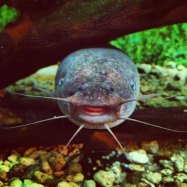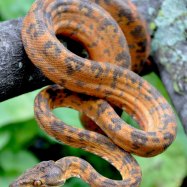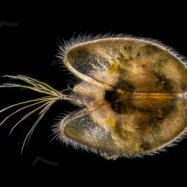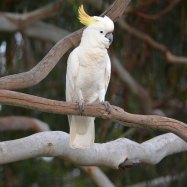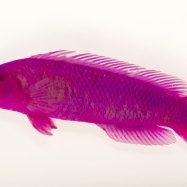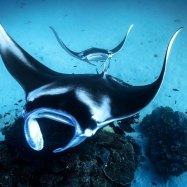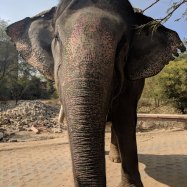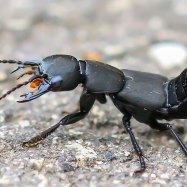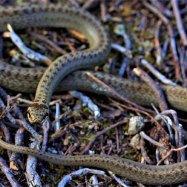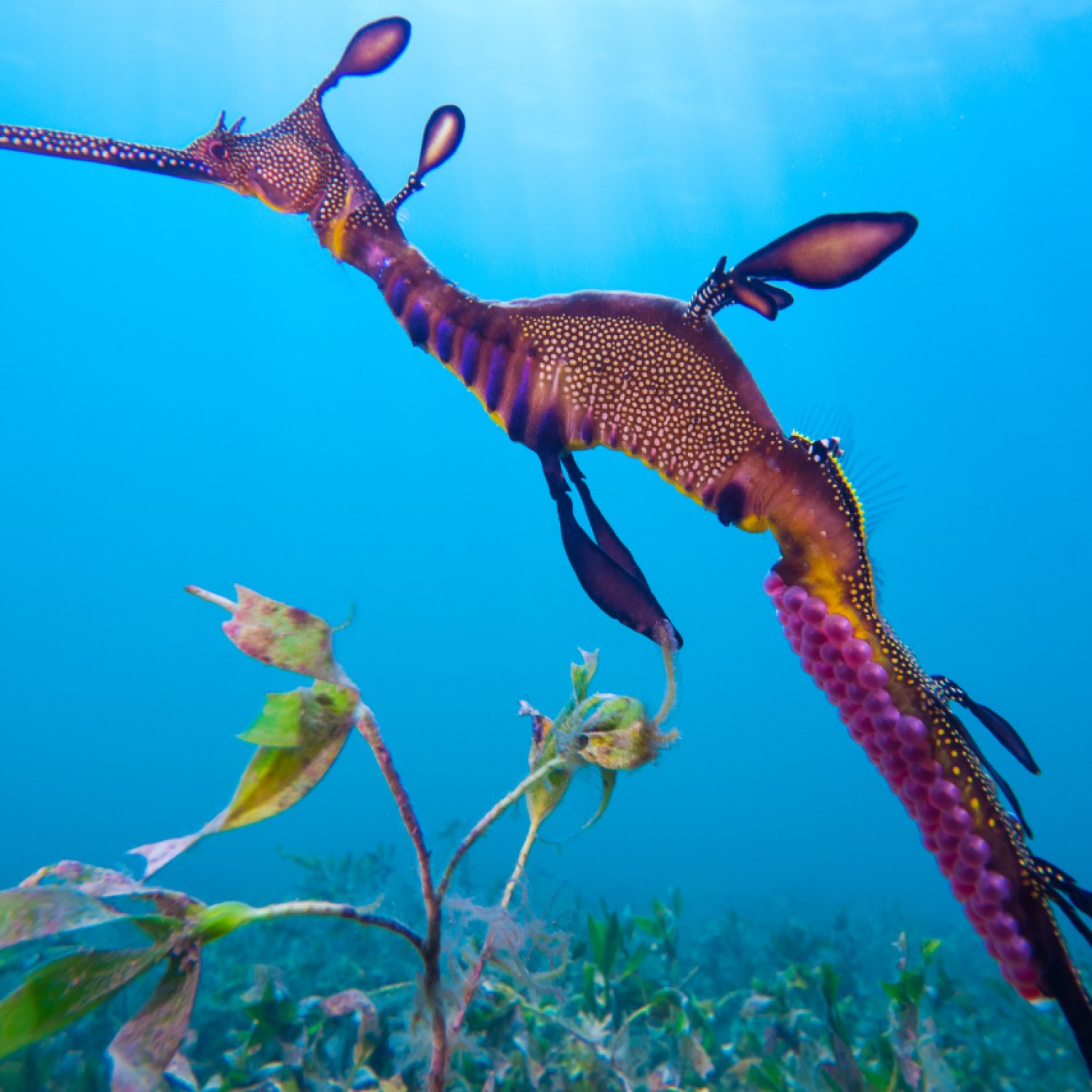
Sea Dragon
30 to 45 cm (11.8 to 17.7 inches)
The sea dragon, from the family Syngnathidae, is a unique underwater creature found in the Indian and Pacific oceans. They can grow up to 45 cm in length and have a long and slender body shape. These fascinating animals are known for their leaf-like appendages and camouflage abilities to blend in with their surroundings. Explore the depths of the ocean to catch a glimpse of this majestic creature.
Animal Details Summary:
Common Name: Sea Dragon
Kingdom: Animalia
Habitat: Coastal waters, seagrass beds, and rocky reefs
The Fascinating Sea Dragon: A Master of Camouflage
The ocean is truly a wondrous place, filled with an array of colorful and unique creatures. From fierce predators to graceful swimmers, the underwater world never fails to amaze us. Among these incredible animals is a creature that is often overlooked and rarely seen – the Sea Dragon.Scientifically known as Phycodurus eques, the Sea Dragon is a member of the Syngnathidae family, which includes seahorses and pipefishes Sea Dragon. These intriguing creatures can be found in the coastal waters of southern and western Australia, mainly in the Indian and Pacific oceans. Let's dive deeper and discover the secrets of this mystical creature.
The Perfectly Camouflaged Master of Disguise
Sea Dragons are truly a marvel of nature, with their intricate and unique coloration. This feature allows them to blend seamlessly into their surroundings, making them difficult to spot. Their body color ranges from brownish to yellowish, with patches of translucent skin that can change color to match their environment. This adaptation helps them evade predators and surprise unsuspecting prey.But their camouflage doesn't stop there – the Sea Dragon has special appendages that resemble leafy seaweed, allowing them to blend into seagrass beds and rocky reefs. These appendages also provide a safe hiding spot for the Sea Dragon's eggs, protecting them until they hatch.
The Majesty of Its Body Shape
Despite its name, the Sea Dragon is not related to mythical dragons Sphynx. However, it does have a distinct and striking appearance. Their body shape is long and slender, with the males having a more elaborate appearance, adorned with filaments and bushy appendages. These features are used for courtship and breeding, making them standout among other creatures in the ocean.These gentle beings can reach a length of 30 to 45 cm (11.8 to 17.7 inches) and have a lifespan of up to five years in the wild. They are slow swimmers, gracefully gliding through the water with their long, thin tails. Sea Dragons can often be seen floating in the water and using their small fins to maneuver.
A Master of Coastal Waters
As the name suggests, Sea Dragons reside in coastal waters, where they have access to abundant food sources. They can also be found in seagrass beds, where their prey, including small fish and crustaceans, can also be found. These habitats also provide ample hiding spots and protect them from strong ocean currents.In addition to their natural habitats, Sea Dragons are also found in aquariums worldwide, where they are cared for and studied to learn more about their behavior and biology. However, they are not easily bred in captivity, making them a rare sight even in aquariums.
A Carnivorous Diet
While they may seem delicate and peaceful, Sea Dragons are carnivorous and mainly feed on small crustaceans, such as mysids and amphipods. They use their long snouts to suck in their prey and have small, sharp teeth to help them break down their food.Being fantastic hunters also means that they are not immune to predators. Larger fish and marine animals, such as sharks, may occasionally prey on Sea Dragons. However, their impressive camouflage and ability to blend in with their surroundings make them less vulnerable to being hunted.
From Egg to Sea Dragon
Breeding and reproduction in Sea Dragons are fascinating processes that involve the male's unique role in parenting. Female Sea Dragons lay around 100 to 250 eggs in a small brood patch on the male's tail. The eggs are fertilized, and the male then carries them for approximately six weeks until they hatch.During this time, the male's tail changes color to protect the eggs from predators and maintain their ideal temperature. Once the eggs hatch, tiny Sea Dragons emerge, completing their lifecycle in the underwater world.
A National Treasure of Australia
The Sea Dragon is native to Australia, and it is considered a national treasure. It is protected by the Australian government, and possession of these creatures, both alive or dead, is prohibited without the necessary permits. The Sea Dragon's population is also declining due to habitat destruction and overfishing.However, efforts are being made to conserve and protect these magnificent creatures. The Australian government has established marine protected areas and enforced strict regulations to prevent illegal fishing and destruction of their habitats.
A Symbol of Grace and Resilience
The Sea Dragon is not just a beautiful creature, but it also symbolizes grace and resilience. Despite their delicate appearance, Sea Dragons have survived in a constantly changing ocean environment for millions of years. They have adapted and evolved to become master hunters, using their unique features to thrive.They have also become an inspiration for many, with their grace and elegance serving as a reminder to embrace our differences and use them as strengths. Like the Sea Dragon, we can blend in with our surroundings, but still, stand out and make a difference.
The Sea Dragon – A Treasure of the Ocean
In a world filled with so much diversity, the Sea Dragon is a true gem. Its impressive camouflage and unique appearance make it stand out in the underwater world. But it is not just its beauty that makes it special. The Sea Dragon is a marvel of nature, and its existence serves as a reminder to cherish and protect our oceans and its inhabitants.As we continue to learn more about the Sea Dragon, let us also work towards preserving its natural habitats and protecting it from harm. Let us be inspired by this mystical creature and continue to explore the wonders of the ocean, always keeping in mind that we are only visitors in their home.

Sea Dragon
Animal Details Sea Dragon - Scientific Name: Phycodurus eques
- Category: Animals S
- Scientific Name: Phycodurus eques
- Common Name: Sea Dragon
- Kingdom: Animalia
- Phylum: Chordata
- Class: Actinopterygii
- Order: Syngnathiformes
- Family: Syngnathidae
- Habitat: Coastal waters, seagrass beds, and rocky reefs
- Feeding Method: Carnivorous
- Geographical Distribution: Southern and western coasts of Australia
- Country of Origin: Australia
- Location: Indian Ocean and the Pacific Ocean
- Animal Coloration: Brownish to yellowish with leaf-like appendages
- Body Shape: Long and slender
- Length: 30 to 45 cm (11.8 to 17.7 inches)
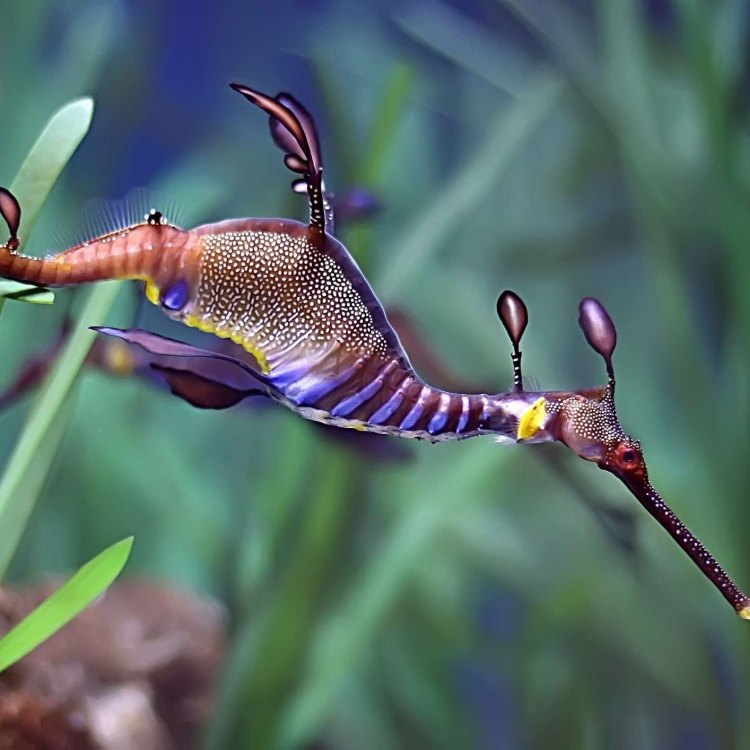
Sea Dragon
- Adult Size: Up to 45 cm (17.7 inches) long
- Average Lifespan: 5 to 10 years
- Reproduction: Sexual
- Reproductive Behavior: Male carries the eggs
- Sound or Call: Not known to produce sound
- Migration Pattern: Resident species
- Social Groups: Solitary
- Behavior: Camouflages among seaweed and seagrass
- Threats: Habitat destruction, pollution, and accidental capture
- Conservation Status: Near Threatened
- Impact on Ecosystem: Important in maintaining biodiversity
- Human Use: Popular in aquarium trade
- Distinctive Features: Leaf-like appendages on the body
- Interesting Facts: They are not true dragons but are related to seahorses and pipefish
- Predator: Various larger fish and crustaceans
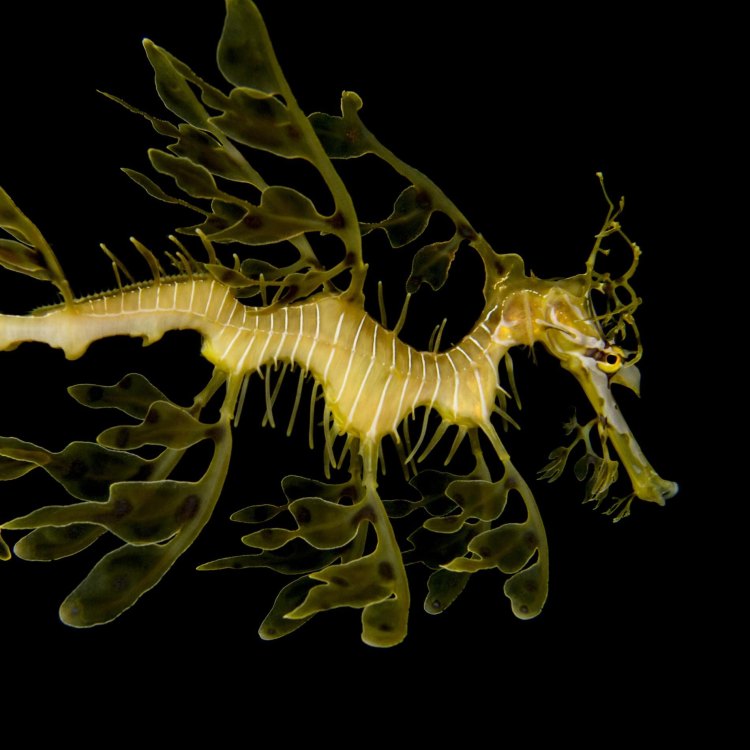
Phycodurus eques
The Enigmatic Sea Dragon: A Leafy Wonder of the Ocean
The open expanses of the ocean are home to some of the most exotic and intriguing creatures on Earth. Among these, one stands out for its unique appearance and captivating behavior - the Sea Dragon. This mysterious and enigmatic creature has fascinated marine biologists and casual observers alike for centuries. With its leafy appendages, graceful movements, and interesting reproductive behavior, the Sea Dragon continues to be a subject of study and awe PeaceOfAnimals.Com. In this article, we'll delve deeper into the world of the Sea Dragon and explore its fascinating features and impact on the ecosystem.Sea Dragons belong to the Syngnathidae family, which also includes the more commonly known seahorses and pipefish. They are found in the shallow waters of the Indian and western Pacific Ocean, mainly in Australia and Indonesia. While they may resemble mythical dragons, they are actually not closely related to them and are more closely related to seahorses and pipefish.
The Sea Dragon is a master of camouflage, with its leaf-like appendages that help it blend in seamlessly with the seaweed and seagrass that it inhabits. This is a key survival mechanism, as it helps the Sea Dragon escape the detection of predators such as larger fish and crustaceans. It is also a solitary creature, rarely seen in groups or pairs, making it a difficult species to study in the wild.
One of the most distinctive features of the Sea Dragon is its leaf-like appendages. While they may seem delicate and ornamental, they serve an important purpose Shepadoodle. These appendages, known as cirri, are not only used for camouflage but also help the Sea Dragon move through the water. They are also used to absorb nutrients and oxygen from the water, as the Sea Dragon does not have a stomach or digestive system.
In terms of size, the Sea Dragon can grow up to 45 cm (17.7 inches) long, making it a relatively small species in the ocean. However, what it lacks in size, it makes up for in grace and agility. The Sea Dragon's body is elongated and slender, with a small head and a long, thin tail. Its fins are almost transparent, adding to its ethereal appearance.
On average, the Sea Dragon has a lifespan of 5 to 10 years. However, due to its elusive nature and limited research, the exact lifespan is still not known. What is known is that reproduction occurs through sexual means, with the male carrying the eggs. This is a unique feature among the Syngnathidae family, as it is typically the female who carries the eggs in other species.
Once the male Sea Dragon is ready to mate, he will develop a brood pouch on his tail. The female will deposit her eggs into this pouch, where they are fertilized and remain until they hatch. This process of egg development and hatching takes about 4-6 weeks. The male then releases the young Sea Dragons into the ocean, and they are left to fend for themselves.
Unfortunately, Sea Dragons face several threats that put their survival at risk. Habitat destruction, pollution, and accidental capture are among the main threats to this species. As they are dependent on seaweed and seagrass for survival, any degradation of their habitat can have detrimental effects on their population. Additionally, they are often caught in commercial fishing nets unintentionally, leading to a decline in their numbers.
Due to these threats, the Sea Dragon is listed as "Near Threatened" on the IUCN Red List. This means that the species is at risk of becoming endangered in the near future if immediate conservation efforts are not made. These efforts include the protection and restoration of their habitats, reducing pollution, and raising awareness about the importance of preserving this unique species.
Apart from their impact on the ecosystem, Sea Dragons also play a significant role in the aquarium trade. They are popular among collectors for their graceful appearance and interesting behavior. However, this demand for Sea Dragons in the aquarium trade also contributes to their decline in the wild. To combat this, some aquariums have started breeding programs for Sea Dragons, which helps reduce the need to catch them from the wild.
In terms of sound or call, Sea Dragons are not known to produce any vocalizations. They are a resident species, meaning they do not undertake long-distance migrations. Instead, they establish territories and remain in the same area for most of their lives. Due to their solitary nature, they do not have any social groups or behaviors.
Despite their elusive nature, there are many interesting facts about the Sea Dragon that add to its intrigue. For example, they are not strong swimmers and prefer to drift along with the ocean currents, using their fins to steer. They are also able to change color to match their surroundings, making them even more difficult to spot in the wild. Additionally, Sea Dragons have been observed to sway and dance with each other during courtship rituals, making for a rare and beautiful sight.
In conclusion, the Sea Dragon may not be a true dragon, but it is undoubtedly a fascinating and essential species in the world's oceans. Its unique appearance and behaviors make it a valuable subject of study and an important part of maintaining biodiversity. However, it is also a threatened species, and immediate action must be taken to ensure its survival. As we continue to explore and learn about the depths of the ocean, let us not forget to protect and preserve these gentle and mysterious creatures.
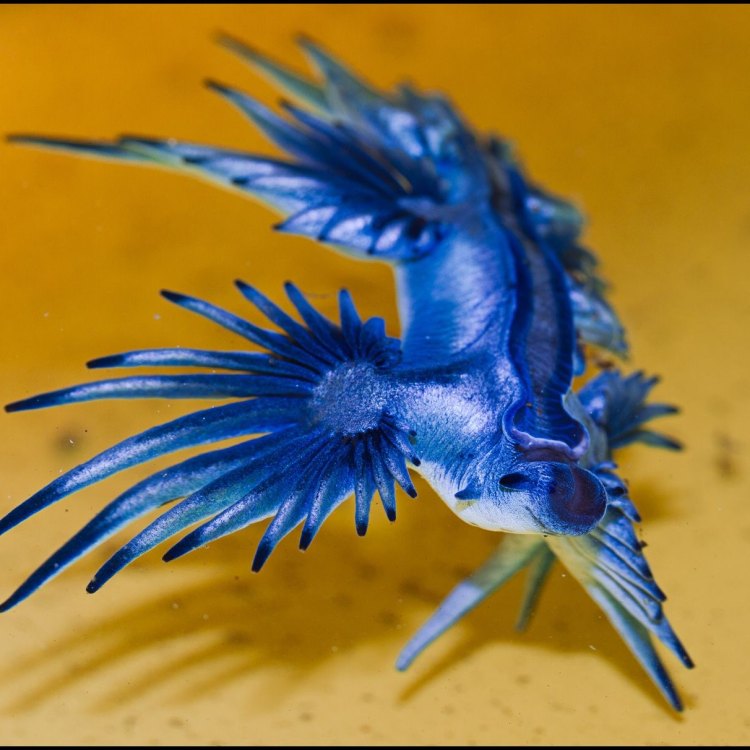
The Fascinating Sea Dragon: A Master of Camouflage
Disclaimer: The content provided is for informational purposes only. We cannot guarantee the accuracy of the information on this page 100%. All information provided here may change without prior notice.

